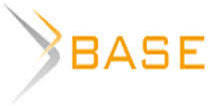Aesthetics of attractiveness in architecture (dynamic meanings)
The article offers overview some semantic characteristics of the concept of attractiveness; the methodological relevance of the concept for research in the field of philosophy of architecture and conceptual and aesthetic aspects of architectural design is substantiated. It is shown that architecture as a holistic and creative phenomenon in its aesthetic dynamics is not reducible to the pure objectivity of systems that standardize professional paradigms of architectural vision. Relevant in this regard is the question of the aesthetics of interaction, the multiple co-presence of various participants in the architectural environment, its innumerable “attractors”, dominant attractive structures and stylistically mutual architectural attractions (both from the side of the architect and his experience, and those common ones that cannot be reduced to the only, but holistic perceptions that are possible for other participants in a culturally incomplete, open architectural environment). The author of the article examines this issue, arguing for performance as a form of implementing attractiveness tactics in the urban environment; at the same time, the conditions of possibility and prospects for an aesthetic-philosophical orientation towards performance are clarified.

















While nobody left any comments to this publication.
You can be first.
Born, A. How architects built China's terrifying glass bridge [Online], available at: https://www.wired.co.uk/article/building-the-worlds-longest-glass-bridge (Accessed 10 May 2023).
Burda F. and Belting H. (2001), Andrea Pozzo und die Videokunst: neue Überlegungen zum barocken Illusionismus [Andrea Pozzo and video art: new reflections on Baroque illusionism], Gebr. Mann, Berlin, Germany (in Germ.).
Cherner, J. (2021), “Suspended 115 Feet in the Air, the World's First Floating Pool Is Unveiled in London”, Architectural Digest [Online], available at: https://web.archive.org/web/20210430161911/https://www.architecturaldigest.com/story/sky-pool (Accessed 10 May 2023).
Dutsev, M. V. (2013), Kontseptsiya khudozhestvennoy integratsii v noveyshey arkhitekture [The concept of artistic integration in the latest architecture], Publishing House of Nizhny Novgorod State University of Architecture and Civil Engineering, Nizhny Novgorod, Russia (in Russ.).
Flagge, I. (2004), Dresden, Stadtführer zeitgenössischer Architektur [Dresden, city guide of contemporary architecture], Das Beispiel, Darmstadt, Germany (in Germ.).
Gamaley, A. A. and Nazarova, V. P. (2022), “Analysis of the experience of designing glamping parks as an object of the ecotourism industry”, The Eurasian Scientific Journal, 14(2) [Online], available at: https://esj.today/PDF/24SAVN222.pdf (Accessed 14 June 2023).
Kazakova, S. A. (2014), “Architectural environment: issues of tourist attraction”, Services in Russia and abroad, 8 (6), 3-13 (in Russ.).
Kazydub, N. N. (2011), “Discursive significance of attraction”, Vestnik Irkutskogo gosudarstvennogo lingvisticheskogo universiteta [Bulletin of Irkutsk State Linguistic University], 4, 96-102 (in Russ.).
Kolarevic, B. (2003), Architecture In The Digital Age: Design and Manufacturing, ImprintTaylor & Francis, London.
Kovaleva, S. V. (2017), “Attraction and passionarity in the system of the scientific paradigm”, Vestnik of Kostroma State University. Series: Pedagogy. Psychology. Sociokinetics, 2, 39-44 (in Russ.).
Lacan, J. (2004), “Anamorphosis”, Chetyre osnovnye ponyatiya psikhoanaliza [Four basic concepts of psychoanalysis], Logos/Gnozis, Moscow, Russia, 8-100 (in Russ.).
Ladovskiy, N. A. (1926), “Fundamentals of building the theory of Architecture (Under the sign of rationalistic aesthetics)”, ASNOVA. Izvestiya Assotsiatsii novykh arkhitektorov [ASNOVA. News of the Association of New Architects], in Lisitskiy, E. and Ladovskiy, N. A. (ed.), VKHUTEMAS, 3-6 [Online], available at: https://tehne.com/assets/i/upload/library/izvestiia-asnova-1926-fx.pdf (Accessed 10 August 2023) (in Russ.).
Lapshina, E. G. (2011), “Architectural space and modeling of its dynamics within the framework of modern information technologies”, Architecture and modern information technologies, 1 (14), 1-12 (in Russ.).
Lapshina, E. G. (2012), “The formula of the new architecture is the dynamics of space”, Vestnik MGSU [Bulletin of the Moscow State University of Civil Engineering], 1, 17-21 (in Russ.).
Lapshina, E. G. (2016), “Architectural space as a dynamic system”, Abstact of D. Sc. dissertation, Nizhniy Novgorod, Russia (in Russ.).
Lazareva, E. (2007), “Fresh breath”, Moscow Art Magazine, 67-68 [Online], available at: http://moscowartmagazine.com/issue/25/article/409 (Accessed 10 August 2023) (in Russ.).
Lazovskaya, S. V. (2011), “New opportunities for the development of tourism and recreational services”, The Bulletin of the Adyghe State University, Series “Economics”, 1, 229-234 (in Russ.).
Leatherbarrow, D. (2020), Building Time: Architecture, Event, and Experience, Visual Arts, Bloomsbury.
Lipkov, A. I. (1990), Problemy khudozhestvennogo vozdeystviya: printsip attraktsiona [Problems of artistic impact: the principle of attraction], Nauka, Moscow, USSR (in Russ.).
Lyusy, A. P. (2012), “The Horseman and the Horsewoman: An astronomical tour of the hidden Pole of the St. Petersburg Text”, Human. Culture. Education, 1(3), 109-126 (in Russ.).
Montagnana, M. Bridge as interactive tool. Anodized aluminium tubes moving in the wind [Online], available at: https://www.arkitectureonweb.com/en/web/designonweb/-/bridge-as-interactive-tool-anodized-aluminium-tubes-moving-in-the-wind (Accessed 10 May 2023).
Mostafavi, M. (1993), On Weathering: The Life Builddings in Time, with David Leatherbarrow, MIT Press, Mass., Cambridge.
Nevlyutov, M. P. (2018), “The Performativity of Architecture in the Phenomenological Concepts of David Leatherbarrow”, Architecture and modern information technologies, 1(42), 178-186 (in Russ.).
Poe, E. (1976), “Ligeia”, Stikhotvoreniya. Proza [Poems. Prose], Khudozhestvennaya literature, Moscow, USSR, 162-174 (in Russ.).
Rappaport, A. G. (2011), Prostranstvo sredy [Environment space] [Online], available at: http://papardes.blogspot.com/2011/10/1978_433.html (Accessed 01 February 2023) (in Russ.).
Rappaport, A. G. (2012), Stecheniya obstoyatel'stv i stiley [Confluence of circumstances and styles] [Online], available at: http://papardes.blogspot.com/2012/05/blog-post_29.html (Accessed 10 May 2023) (in Russ.).
Rappaport, A. G. (2012), Vizual'nost' i problematizatsiya [Visuality and problematization] [Online], available at: http://papardes.blogspot.com/2012/10/blog-post_6822.html (Accessed 10 May 2023) (in Russ.).
Rappaport, A. G. (2014), Situatsiya 65 Situatsiya i Intuitsiya [Situation 65 Situation and Intuition] [Online], available at: http://papardes.blogspot.com/2014/08/65.html (Accessed 10 May 2023) (in Russ.).
Rappaport, A. G. (2018), Refleksivnaya mekhanika telesnoy svobody [Reflexive mechanics of bodily freedom] [Online], available at: http://papardes.blogspot.com/2018/10/blog-post_21.html (Accessed 10 May 2023) (in Russ.).
Safaryan, A. A. (2015), “Tourism in Armenia: destination, attraction, information resources”, Abstract of Ph. D. dissertation, Perm, Russia (in Russ.).
Stamac, I. (2005), “Acoustical and Musical Solution to Wave-driven Sea Organ in Zadar”, Proceedings of the 2nd Congress of Alps-Adria Acoustics Association and 1st Congress of Acoustical Society of Croatia, Zagreb, 203-206.
Stepanov, A. V. and Stepanova, T. M. (2019), “Attractiveness and repellency in visual arts”, Original research (ORES), 6, 49-55 (in Russ.).
Vesely, D. (2004), Architecture in the Age of Divided Representation: The Question of Creativity in the Shadow of Production, MIT Press, Cambridge.
Vinnitskiy, M. V. (2021), “Performance in architecture”, Akademicheskiy vestnik UralNIIproekt RAASN [Academic Bulletin of UralNIIproekt RAASN], 3, 52-57.
Vorobyova, N. I., Gorshkov, I. D. (comp.) (2019), Proektirovanie turistskikh attraktsiy [Design of tourist attractions:], Publishing House of Yaroslavl State University, Yaroslavl, Russia (in Russ.).
Zade, F. (2001), Zhizn' i puteshestviya s otsom nechetkoy logiki Fey Zade [Life and travels with the father of Fuzzy Logic Faye Zadeh], Chashyogly, Baku, Azerbaijan (in Russ.).
Zayats, I. S. (2016), “Movement as an architecture category”, Ontology of Designing, 6 (1 (19)), 95-105 (in Russ.).